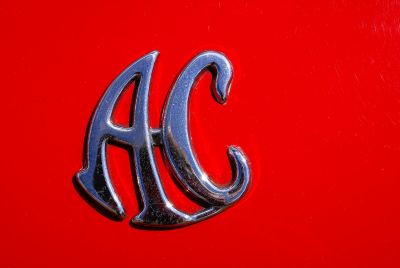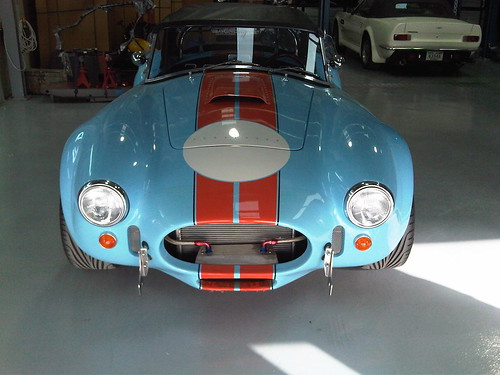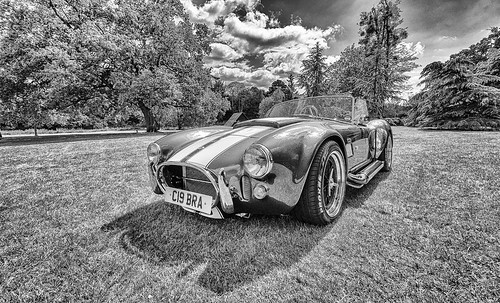
Interesting Facts About AC Cars You Probably Don’t Know – Common Problems – and PDF Manuals for Download…
When it comes to old car companies with a rich heritage, AC Cars Ltd., an iconic automobile manufacturer of British origin, is one of the names you have to mention. It is the oldest surviving British company still making cars, and has undergone several changes in ownership, organisation and brand identity over its history of over a century.
While today it is a niche car manufacturer making limited production, handcrafted and high-performance cars, it had a very different image in its initial years. Today the cars are pretty rare, mostly due to the company’s decision to stick to exclusive and handcrafted cars, but once upon a day, a lot of the London’s fashionable elite owned an AC car.
AC Cars, then known as Autocar, was founded in 1901 by its founder John Weller with financial support from John Portwine. Weller’s passion for building cars led to the foundation of the company in a small workshop, and in 1903 they made their first automobiles and unveiled them at the British Motor Show the same year.
Autocar was among the early pioneers in auto technology, and their earlier car was offered in options of 10 HP and 20 HP engines.
Those were the performance cars of those days. The next year, the company changed its name to Autocarrier & Accessories limited, and turned its attention to more practical automobiles rather than performance cars for auto shows. This led to the development of the 5.6 HP model named the Autocarrier.
This was a practical automobile with a tricycle wheel design. It was quite successful with various businesses as a delivery vehicle. Later, a passenger version of the Autocarrier, called the Sociable, was also introduced in 1907, which was also quite successful.
It was also adapted for military use and issued to the 25th London Cyclist Regiment as light machine gun carriers and ammunition transports. The Royal Army later adopted the Autocarrier on a larger scale due to its reliable and practical design.
In 1915, the abbreviation AC first came into use and the company once again changed the name to Autocarriers Limited. Throughout and after the Great War, the company continued successful production run of its Autocarriers and related models until the early 1920s.
A major change in the company’s direction and identity came after Selwyn Francis Edge, a racing driver, took over as the chairman of the company. The company laid more focus on the racing and performance cars rather than practical and simple automobiles.
The company’s newer models used aluminium straight line six cylinder engine which was quite light weight and produced 40 HP with a displacement of 1477 cubic centimetres.
These models starting great successes in auto races. A specially built AC car with 1500 cc aluminium engine was the first car to cover the 100 miles in less than 1 hours at the Brooklands Raceway.
AC performance cars also demonstrated their superiority by setting a new 82 mph record over 24 hrs and covering over 1500 miles in France in about 9 days. It became one of the largest British automobile manufacturers by the mid and late 1920s, with the successful introduction of seven more models.
However, the great depression hit the company hard, which forced it into liquidation and thus it changed ownership. After a brief halt in production, AC continued small scale production of handmade cars throughout the 1930s.
By the late 1930s and after the World War 2, AC cars were imported into the North American market. The AC Ace was introduced in 1953. It was an open two seater sports car that was also capable of regular motoring.
It was successful in motoring competitions. In 1961, in partnership with Ford, AC installed the 4.8 L V8 engine provided by Ford into the AC Ace. This combination of incredible power and light body made it one of the fastest cars of the time.
It was also offered in a 7 L V8 500 HP variant for competitions. It wowed the audience on the M1 motorway before Le Mans by reaching speeds of almost 183 mph.
In the 1980s, the AC Ace came to be known as the Mk IV, and the model is in production till date. The newer models are made to comply with all the regulation of the US and comparable EU regulations for its European variants.
Today all the Mk IV cars are hand built in Germany and come with various Ford V8 engines.
The company is now known as AC Cars Ltd, and all its cars still have the classic look, despite the modern amenities and technology. Very few other car brands can claim to be associated with such rich heritage as AC Cars.
Conclusion
AC cars are classic and hand built cars with certain kinds of issues that you are unlikely to encounter with regular mass-produced cars. As is typical with many hand-built cars, the fit and finish of the cars vary from car to car, and it may lead to some issues.
A technical manual will help you recognise problems caused due to this. In addition, most of the bodywork of AC cars are made from aluminium, and it requires special care to prevent stress cracks and dents. Also, the custom hand built nature of the car allows for a significant upgrade and modification options.
Some AC car owners even retrofit their car’s engine to suit their wants.
However, in order to have such a retrofit done, a technical manual detailing the design specifications of the car is quite essential. Most auto workshops will refuse to conduct major overhaul operations on your cars without adequate technical details.
These cars are rare, and hence it will be hard to find someone with experience working on these cars, and hence you must have a manual with you and take it with you to the technician when you take the car for servicing.
This is a very special kind of car with a rich heritage, but it needs special care, and having a manual and technical specifications handy is important to be able to provide the necessary care.
Purpose of this is to catalog and include one of most comprehensive, useful and accessible “automotive repair PDF manual” database on the web for all AC models.
It’s your go-to source for learning all about AC – when you can’t find it elsewhere.
To get started, select the intended car model below…




